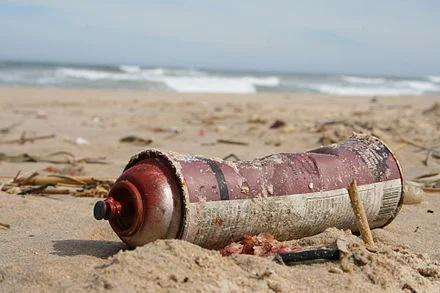Southern New England's polluted beaches
From ecoRI News (ecori.org)
Nearly 60 percent of the 4,523 beaches tested nationwide last year had water pollution levels on at least one occasion that put swimmers at risk of getting sick, according to a new report by Environment America.
The report, Safe for Swimming?, looked at fecal bacteria levels at beaches in 29 coastal and Great Lakes states, as well as Puerto Rico.
“Swimming at the beach is a prime summertime joy for millions of Americans, but clearly we have more work to do to make sure water at all our beaches is safe,” said John Rumpler, Environment America’s clean water program director. “We must invest in water infrastructure that prevents pollution to ensure that America’s waterways are safe for swimming.”
Fecal bacteria can make people ill, particularly with gastrointestinal ailments. Common sources of this pollution include stormwater runoff and sewage overflows. Swimming in polluted water causes an estimated 57 million cases of illness annually, according to a 2018 study published in the journal Environmental Health.
This problem is widespread. In Illinois, for example, all 19 beach sites sampled exceeded the margin of safety for fecal bacteria recommended by the Environmental Protection Agency (EPA).
As for southern New England, here is what the report found:
Rhode Island: 54 of 129 beach sites sampled were potentially unsafe for at least one day in 2018. A sampling site at Easton’s Beach in Newport was potentially unsafe for 10 days, more than any other site in the state.
Massachusetts: 223 of 583 beach sites sampled were potentially unsafe for at least one day. A sampling site at Nahant Bay was potentially unsafe for 39 days.
Connecticut: 81 of 113 beach sites sampled were potentially unsafe for at least one day. A sampling site at Byram Beach in Fairfield County was potentially unsafe for six days.
Across the country, 2,620 beach sites exceeded the EPA margin of safety at least once last year. Of those, 605 locations were potentially unsafe in at least one-quarter of the bacteria tests. All told, there were 871 beach closures nationwide in 2018.
The 46-page report includes several recommendations to prevent bacterial pollution and keep beaches safe for swimming. Rain barrels, rooftop gardens, permeable pavement, and urban green space can all absorb stormwater runoff and help prevent sewage overflows.
“Our analysis of nearly 200,000 sampling results reveals threats to public health at beaches in every corner of the country,” said Gideon Weissman, of Frontier Group, which co-authored the report. “It's no longer enough to warn swimmers when beaches may be unsafe, especially when there are steps we can take today to reduce the threat of bacterial contamination in our waterways.”
